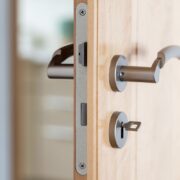In the relentless rhythm of industry, where every second counts, the quest for efficiency is more than a necessity—it’s a race against time. This dynamic duo rewrites the playbook: air compressors and generators, united in a powerful partnership. It’s not just a collaboration; it’s a symphony of productivity.
In this blog, we’re about to unveil how the fusion of air compression and electrical power is not just a game-changer; it’s a turbo-charged revolution propelling businesses to new heights of efficiency. Buckle up; you’re about to witness the harmony of power and air working together like never before!
How Does an Air Compressor Work?
An air compressor works by pulling in air through an intake valve and then using a piston or rotating element to compress the air. This compression increases the air pressure, converting it into potential energy. The compressed air is stored in a tank until needed. When a tool or machine requires air, the compressor opens a valve, releasing the pressurized air to power various applications like pneumatic tools or inflated tires.
How Do Generators Work?
Generators work by converting mechanical energy into electrical energy. They consist of an engine that burns fuel or operates on another power source, which turns a rotor within a magnetic field. As the rotor spins, it creates an alternating current (AC) of electricity. When you have more, they can use components like an alternator to convert the AC into a more usable form, usually direct current (DC), providing a reliable electrical power source for homes, businesses, or remote locations.
Combining air compressors and generators in a unified system can result in a synergistic effect that significantly enhances overall efficiency in various applications. Let’s delve into the details of how this integration can maximize efficiency:
- Space Optimization
- Traditional Separation: Typically, https://garpen.com.au/air-compressors-for-sale and generators are standalone units, occupying separate spaces. Integrating them into a single unit eliminates the need for redundant components, reducing the overall footprint and freeing up valuable workspace.
- Unified Design: Combined air compressor-generator units are designed with a compact and streamlined approach, allowing more efficient space utilization. This is particularly advantageous in limited real estates settings, such as construction sites or mobile operations.
- Cost Savings
- Shared Components: Integrated units often share components like the engine and control systems. This shared infrastructure leads to cost savings in procurement, maintenance, and repairs.
- Reduced Installation Costs: Combining the two systems means a simplified installation process. There’s no need for separate wiring, connections, or infrastructure, resulting in reduced installation costs and faster deployment.
- Increased Mobility
- Portability: Integrated air compressor-generators are inherently more portable compared to separate units. This portability is especially beneficial in industries such as construction, where tools and equipment must be moved frequently across job sites.
- Versatile Applications: The combined unit’s mobility enhances its versatility, enabling it to cater to various applications without the constraints associated with stationary systems.
- Energy Efficiency
- Optimized Energy Consumption: Integrating air compressors and generators allows for better energy usage synchronization and control. Smart systems can manage power output based on the real-time demand for compressed air and electrical power, optimizing energy consumption.
- Reduced Energy Loss: In a combined system, energy loss associated with transmitting power between separate units is minimized. This reduction in energy loss contributes to overall system efficiency.
- Operational Streamlining
- Synchronized Operations: Integrated units can synchronize the air compressor and generator operations seamlessly. This synchronization ensures that the generator provides sufficient power to meet the demands of the air compressor and vice versa, avoiding inefficiencies associated with mismatched operations.
- Automated Controls: Advanced control systems in integrated units often come with automation features, allowing for the preset and automated adjustment of parameters based on real-time conditions. This automation minimizes the need for manual intervention and optimizes system performance.
- Maintenance Efficiency
- Single Maintenance Point: With a combined unit, maintenance efforts are concentrated on a single system rather than dispersed across separate components. This streamlines maintenance procedures, reduces downtime, and simplifies the overall upkeep of the equipment.
- Diagnostic Capabilities: Integrated systems often come equipped with advanced diagnostic tools and sensors that can monitor the health of both the air compressor and generator. Early detection of issues allows for proactive maintenance, further enhancing system reliability.
Maintaining an Air Compressor:
- Regular Inspection: Conduct routine visual inspections for any signs of leaks, wear, or damage in hoses, fittings, and the compressor unit itself.
- Oil Check: Check oil levels regularly for oil-lubricated compressors and change the oil according to the manufacturer’s recommendations.
- Air Filter Maintenance: Clean or replace air filters to ensure optimal airflow and prevent contaminants from entering the compressor.
- Draining Moisture: Regularly drain moisture from the compressor tank to prevent the accumulation of water, which can lead to corrosion.
- Tighten Connections: Check and tighten all connections, bolts, and fasteners to prevent air leaks and ensure the stability of the compressor components.
- Cooling System: Ensure that the cooling system, such as fins and fans, is clean and unobstructed for efficient heat dissipation.
Maintaining a Generator:
- Fuel System Maintenance: Regularly check and replace fuel filters to prevent clogs, and use clean, stabilized fuel to avoid engine issues.
- Oil Change: Change the generator’s oil regularly per the manufacturer’s recommendations to maintain engine lubrication.
- Battery Inspection: Inspect and clean the battery terminals, ensuring a strong connection. Recharge the battery regularly, especially for standby generators.
- Air Cooling System: Keep the generator’s air cooling system clean and debris-free to prevent overheating and maintain optimal performance.
- Regular Testing: Periodically test the generator by running it under load to ensure it operates smoothly and can handle the required electrical load.
- Voltage Regulation: Check and adjust the generator’s voltage regulator to ensure a stable and consistent electrical output.
- Exhaust System Inspection: Inspect the exhaust system for leaks and ensure the muffler and exhaust pipes are in good condition.
Always refer to the manufacturer’s guidelines and manuals for specific maintenance schedules and procedures tailored to your air compressor or generator model. Regular maintenance extends the lifespan of these machines and ensures their reliability when you need them most.
In essence, the marriage of air compressors and generators into a single, integrated system is a strategic move beyond mere convenience. It’s a calculated effort to maximize efficiency by optimizing space, reducing costs, enhancing mobility, improving energy efficiency, streamlining operations, and simplifying maintenance procedures. This integration is a testament to the continuous pursuit of efficiency in industries where every ounce of productivity counts.












Comments